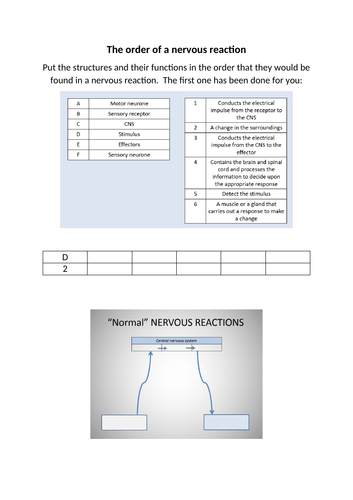





This lesson describes the structure and function of the sensory and motor neurones. The PowerPoint and accompanying resources are part of the 4th lesson in a series of 17 lessons that cover the details of the brain and neuropsychology topic of the AQA GCSE Psychology specification.
This lesson focuses on the functions and the structural similarities and differences between a sensory and motor neurone. Students will be introduced to key structures like the cell body, axon and dendrites and learn how they differ in these two peripheral nervous system neurones. They will also learn about the myelin sheath and will be challenged to use a data table to recognise that myelinated neurones conduct impulses faster than unmyelinated neurones. There is a brief explanation about the jumping action of the impulse between the nodes of Ranvier to enable this faster conduction.
This topic of the brain and neuropsychology has proved particularly difficult for the students in recent years, so I have taken time to analyse the lesson sequencing. There’s a lot of content to absorb and to understand before moving onto the next part, so I’ve tried to ensure that cross topics links and prior knowledge checks run throughout the lessons. I have organised the lessons to run through the biology content first before moving onto the psychology parts as shown by the 17 lessons below:
#1 Organisation of the nervous system
#2 The structure and function of the cerebral lobes
#3 The cerebellum
#4 The structure and function of the sensory and motor neurones
#5 The relay neurones
#6 Synaptic transmission
#7 Excitation and inhibition at the synapse
#8 The somatic nervous system
#9 The autonomic nervous system
#10 The fight or flight response
#11 James-Lange theory of emotion
#12 James-Lange theory of emotion part 2
#13 Penfield’s study of the interpretative index
#14 Hebb’s theory of learning and neuronal growth
#15 An introduction to neuropsychology
#16 Brain scanning techniques
#17 Tulving’s gold memory study
Something went wrong, please try again later.
This resource hasn't been reviewed yet
To ensure quality for our reviews, only customers who have downloaded this resource can review it
Report this resourceto let us know if it violates our terms and conditions.
Our customer service team will review your report and will be in touch.